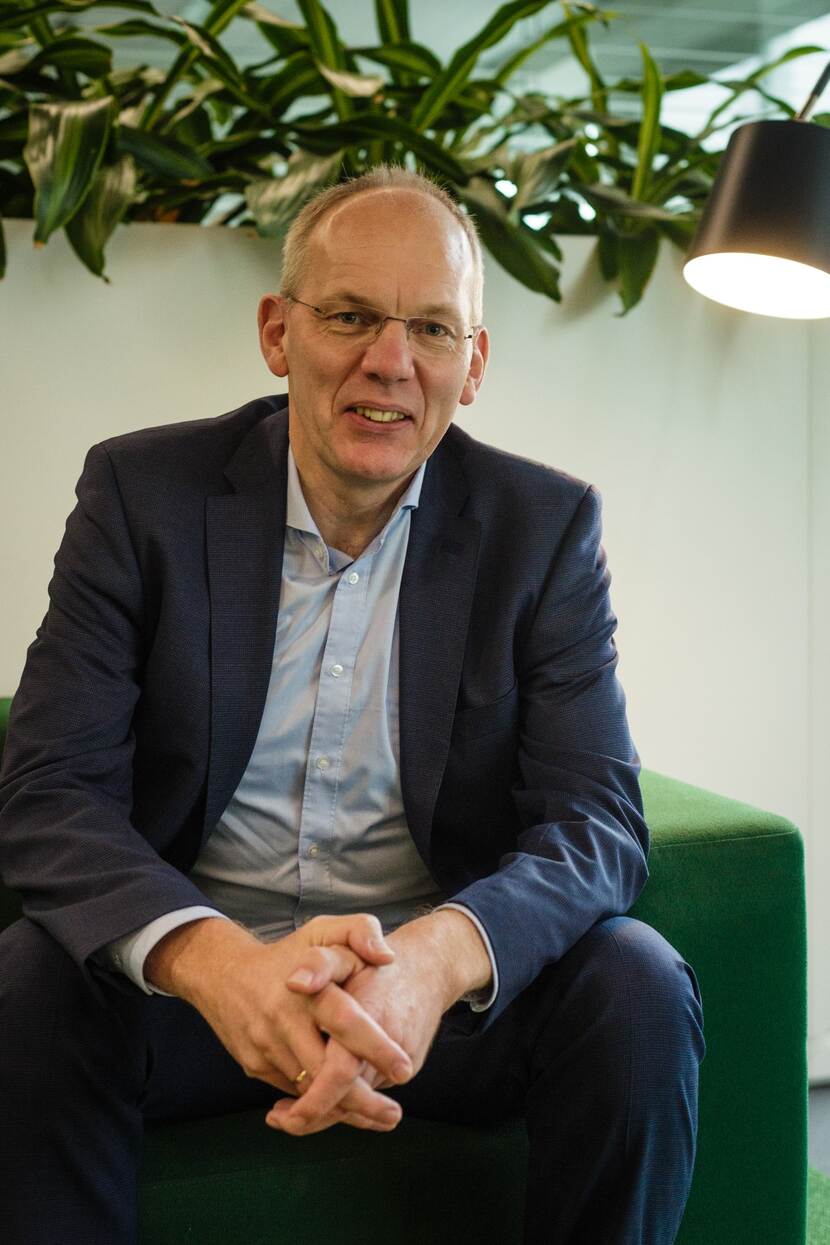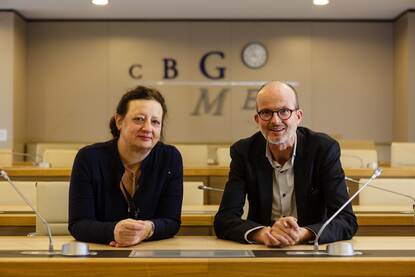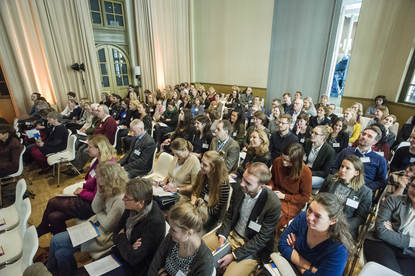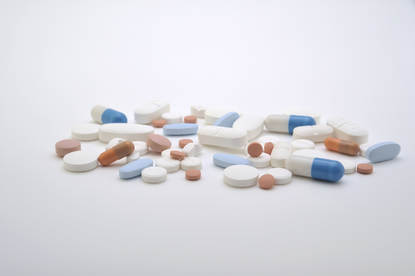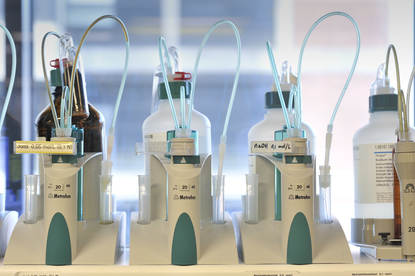Randomised Controlled Trials still are considered the gold standard when it comes to studying the efficacy and safety of medicinal products. So-called 'Real World Data' is an excellent supplement to that, in the opinion of Prof. Eric Boersma, MSc, PhD, who is affiliated to the Erasmus MC Thoraxcenter, head of the Clinical Epidemiology Research Unit and the Cardiology Trial Bureau, and a member of the MEB.
"It's always a matter of weighing benefits and risks. A Randomised Controlled Trial generates the fairest possible picture. However, one should always wonder: to what extent are we facing the 'real' world? After all, a randomised trial is carried out using a select group of patients only, while a medicinal product is eventually used by a much wider population. Using Real World Data enables us to gain a much better picture of the breadth of the patient population in clinical practice, and provides a better insight into how trial patients relate to that population. And, thus, how to extrapolate trial results."
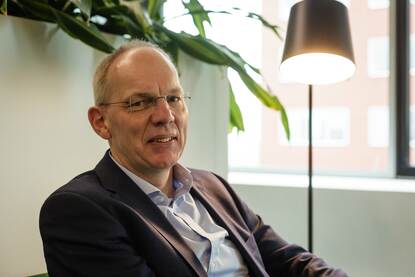
For many decades, the Randomised Controlled Clinical Trial (RCT) is accepted as the gold standard for studying efficacy and safety of medicinal products, preferably using a placebo as control. Eric continues, "Randomisation ensures internally consistent results. By including a control group one can reasonably explain the measured effects. In that respect, the RCT generates the fairest possible picture, which can be extrapolated to patients that haven’t participated, but do have a comparable profile. However, clinical trialists and others working in the field are well aware that the RCT fails to paint a complete, ‘real’ picture. In fact, clinical trials only enrol a select group of patients who fulfil strict inclusion criteria and have been asked to participate. The list of explicit exclusion criteria is usually extensive, whereas implicit criteria also play a part here. Researchers tend to avoid the enrolment of patients that are unlikely to finish the protocol, as well as patients with an increased risk of adverse events, even if these are unrelated to the study medication. And precisely those are the interesting patients, with a higher prevalence of co-morbidities, not-so-typical presentation, and higher risks. Researchers and clinicians are aware of the notion that trial groups result from selection processes. In particular clinicians then face the challenge to translate trial results into treatment actions in individual patients. I think a great opportunity of the current era is that the 'Real World Data' - despite it being a buzzword - can help us gain a better, more complete picture of the breadth of patient populations, and provide an insight into how a certain trial-patient relates to the population of interest. And, thus, how to extrapolate trial results."
Increasing usage of Real World Data is one of the developments Eric notices with respect to the contextualisation of clinical trial results. "Current technological developments provide us with a better view on external validity and patient representativeness compared to the outside real world. Especially when compared to 20 or 30 years ago. That brings to mind what the consequences might be for MEB decisions. Because in most registration dossiers we focus on randomised trial results. Based on that information we decide whether a marketing authorisation can be granted. Observations in database trials or non-randomised observational studies provide supportive evidence. If there is a greater degree of uncertainty, particularly regarding safety, we request a Post Authorisation (Safety) Study. But those are also limited, in terms of scope and target group. We may have to rethink this process. How do these different sources of evidence relate to each other? I believe this is a fascinating development."
Jealous of Sweden
Sometimes Eric is actually jealous of his Swedish colleagues. "Because they collect Real World Data in a properly organised way." Whenever a patient is admitted to a Swedish hospital, the event is registered and the patient is then automatically followed throughout the healthcare system. Eric continues, "A patient who has, for example, suffered a heart attack can be tracked relatively easily from the moment of the attack and throughout all the events that follow. The information is collected electronically. If you perform a randomised trial and the patient in question gives approval for participation in a certain research intervention, for example involving a type of stent, the follow-up takes place 'automatically' in the system. Something that's even more impressive is that it is much easier to engage patients in Sweden in a trial because many more patients give their permission. This means they can carry out large-scale studies in a fairly short space of time. These are studies of which the backbone is the registration in the healthcare system. This, in turn, ensures patient inclusion which is representative for that population. Although we have the same consent procedure in the Netherlands, the researcher then has to actively follow the patient in order to obtain follow-up information. So researchers have to telephone the patient, GP or hospital themselves."
"Real World Data can provide better insights into patient populations in clinical trials"
Using Real World Data
The use of Real World Data also creates the possibility to better visualise prognostic factors and, in that way, to improve classification of patients and individuals according to their risk of certain clinical endpoints. The Netherlands is still at the beginning of that process, says Eric: "For example, at the Erasmus MC, data is fixed in certain silos, whereas communication between those silos is complex. The Erasmus MC is not unique in that respect; most medical centers struggle with this phenomenon. Data exchange within and between hospitals is complicated by differences in data-definitions. Also the recently introduced General Data Protection Regulation (GDPR) plays a part. It is sometimes unclear which data may be used for research purposes, and which data are protected. And there are discussions on data ownership. There’s still a lot left to be done. On the bright side: technology for easy data exchange is available. That development can’t and won’t be stopped. This is going to happen in the coming decade. I’m noticing an increase in the willingness to share data, because people understand the usefulness of their personal data to help eradicate diseases and its sequelae. Personally, I don't mind sharing my own data, if I do know the purpose of its use, and if I can be reasonably certain about data-safety measures." The future is in data donorship, as far as Eric is concerned. However, at a certain point in drug development one will get in touch with the industry. Eric continues, "There's nothing wrong with this, but it could be a barrier. If data that is provided at no personal benefit will be used for commercial purposes, I can imagine that people will start asking questions."
Looking for balance
Are we in a transition phase in which classical studies are being expanded or adapted? Eric thinks that could well be the case: "The entire system we've build in recent decades in order to develop and register medicinal products is extremely expensive. Also, drug development from bench to bedside takes too much time. It can be quite frustrating for patients to have to wait for the next development. Also in that respect we should reflect on whether this is the system we want to keep in the future." There is a high demand for new drugs. Still, it will remain crucially important to properly estimate benefits and risks on a scientific basis. Eric: "Proper estimates of efficacy and possible adverse reactions are key, if we want to assess the benefits and risks, like we do at the MEB. If we’re not sure about those effects, we can’t take the right decisions." Scope and size of clinical trials also play a role. Eric continues, “In order to make reliable statements on benefits and risks, clinical trials must include a sufficiently large series of patients. Strictly speaking: the number of patients that reaches a predefined, clinically relevant endpoint must be large enough. If the incidence of such endpoint is relatively small, only a limited number of patients will reach the endpoint during the study period. The implication not only is that studies have to be extremely large in order to demonstrate efficacy, but also that a sizable group of patients is included from a (sub)population that will not benefit of treatment. One can doubt if that is acceptable or ethical. We have to work out how to improve the balance. The development of new drugs will be hindered if we fail to do so, since researchers will hesitate to perform trials including tens of thousands of patients and the huge logistical challenge that brings. It would be great if research could be done in smaller scale trials."
